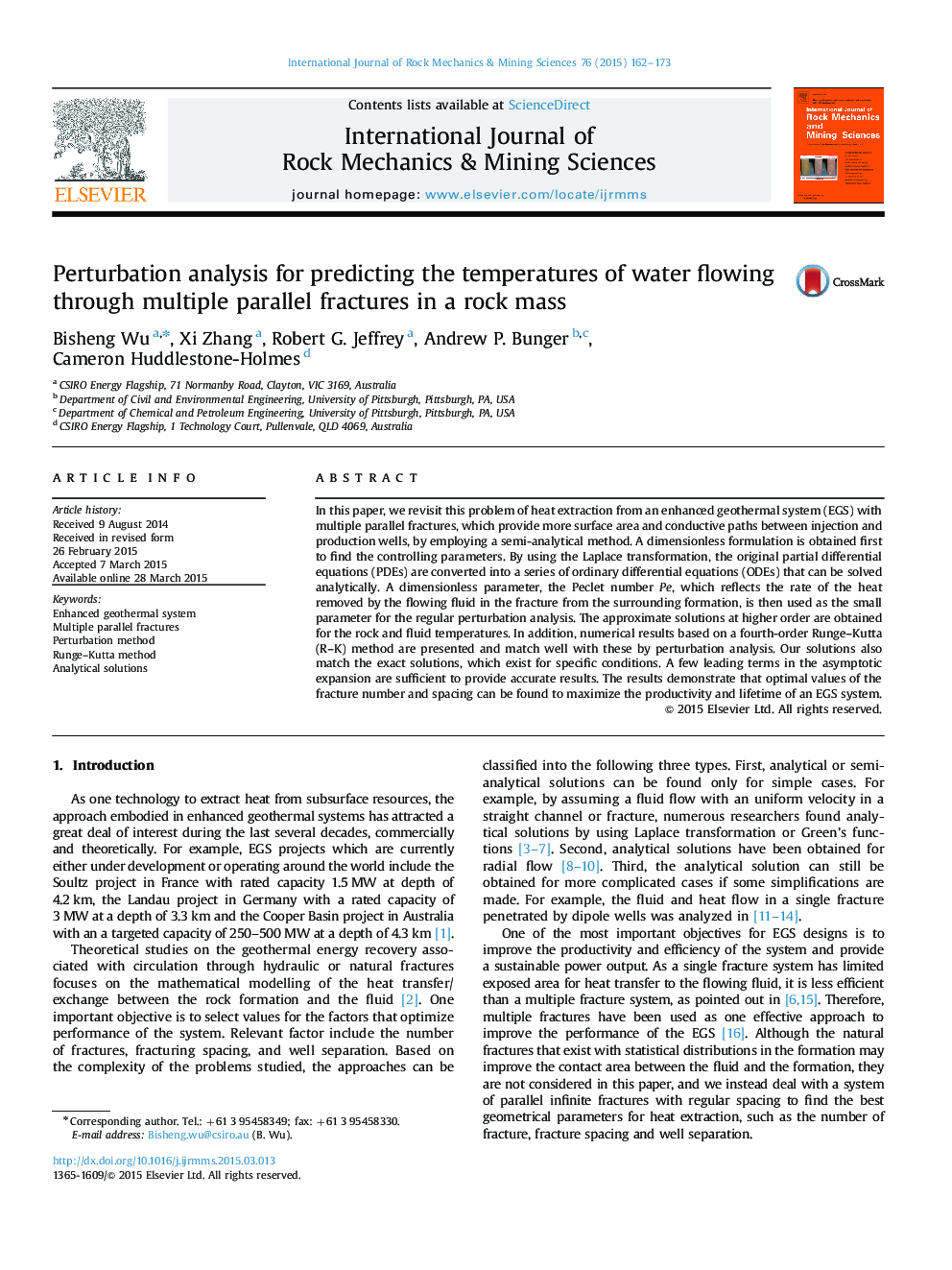| Article ID | Journal | Published Year | Pages | File Type |
|---|---|---|---|---|
| 809432 | International Journal of Rock Mechanics and Mining Sciences | 2015 | 12 Pages |
•We model the heat extraction from a multiple fracture system.•The controlling parameters are found via a scaling analysis.•Approximate solutions are obtained via a perturbation method.•Optimal values for the number of fractures and fracture spacing are found.•The present model works as an efficient and effective tool for EGS design.
In this paper, we revisit this problem of heat extraction from an enhanced geothermal system (EGS) with multiple parallel fractures, which provide more surface area and conductive paths between injection and production wells, by employing a semi-analytical method. A dimensionless formulation is obtained first to find the controlling parameters. By using the Laplace transformation, the original partial differential equations (PDEs) are converted into a series of ordinary differential equations (ODEs) that can be solved analytically. A dimensionless parameter, the Peclet number Pe, which reflects the rate of the heat removed by the flowing fluid in the fracture from the surrounding formation, is then used as the small parameter for the regular perturbation analysis. The approximate solutions at higher order are obtained for the rock and fluid temperatures. In addition, numerical results based on a fourth-order Runge–Kutta (R–K) method are presented and match well with these by perturbation analysis. Our solutions also match the exact solutions, which exist for specific conditions. A few leading terms in the asymptotic expansion are sufficient to provide accurate results. The results demonstrate that optimal values of the fracture number and spacing can be found to maximize the productivity and lifetime of an EGS system.
